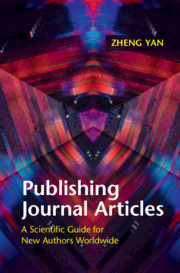Book contents
- Publishing Journal Articles
- Publishing Journal Articles
- Copyright page
- Dedication
- Contents
- Figures
- Preface
- Part I Nature of Journal Article Publication
- Part II Elements of Journal Article Publication
- Part III Strategies of Planning Journal Articles
- Part IV Strategies of Writing Journal Articles
- Chapter 9 How Should We Write Review Articles?
- Chapter 10 How Should We Write Methodological Articles?
- Chapter 11 How Should We Write Theoretical Articles?
- Chapter 12 How Should We Write Empirical Articles?
- Part V Strategies of Publishing Journal Articles
- Part VI Future of Journal Article Publication
- Index
Chapter 11 - How Should We Write Theoretical Articles?
from Part IV - Strategies of Writing Journal Articles
Published online by Cambridge University Press: 27 October 2020
- Publishing Journal Articles
- Publishing Journal Articles
- Copyright page
- Dedication
- Contents
- Figures
- Preface
- Part I Nature of Journal Article Publication
- Part II Elements of Journal Article Publication
- Part III Strategies of Planning Journal Articles
- Part IV Strategies of Writing Journal Articles
- Chapter 9 How Should We Write Review Articles?
- Chapter 10 How Should We Write Methodological Articles?
- Chapter 11 How Should We Write Theoretical Articles?
- Chapter 12 How Should We Write Empirical Articles?
- Part V Strategies of Publishing Journal Articles
- Part VI Future of Journal Article Publication
- Index
Summary
This chapter addresses how to publish theoretical articles. People’s intuitive knowledge about how to publish theoretical articles appears to vary substantially and be quite limited. From the four real-life cases (Kwan, Tom, Zoe, and Violina) described in the chapter, we can see that people are not well prepared to use appropriate and sufficient knowledge to guide their practice in publishing theoretical articles, even for those who successfully published multiple theoretical articles while failing to publish multiple theoretical articles. From the four articles discussed in this chapter, we can learn that it is important to develop skills of theorizing even in the early career, that there is rich knowledge about how to write this type of articles for publication (e.g., how to write Introduction), that theory-building and theory-testing are two major approaches, and that we can build and test theories in various innovative ways. The chapter ends with three practical suggestions, including making deliberate efforts to develop our theorizing skills as soon as we can, developing or testing different levels of theories innovatively, and understanding, generating, and presenting theoretical contributions of theoretical articles.
Information
- Type
- Chapter
- Information
- Publishing Journal ArticlesA Scientific Guide for New Authors Worldwide, pp. 119 - 129Publisher: Cambridge University PressPrint publication year: 2020
